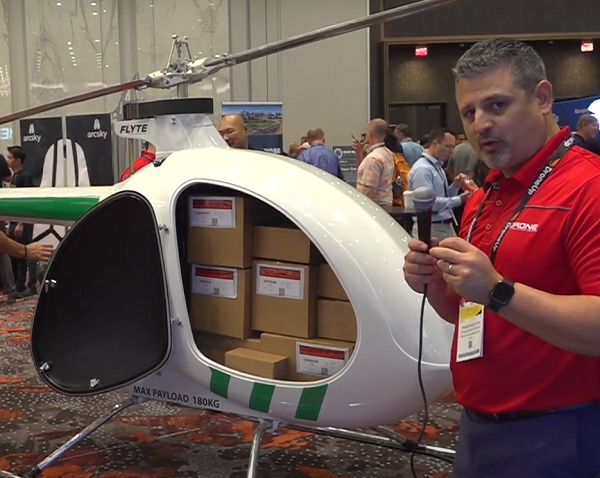This week, Drone Delivery Canada (DDC) announced that it had signed a contract with the Canadian Government’s Innovative Solutions Canada program to work with Transport Canada to test and evaluate DDC’s Condor, a heavy-lift remote piloted aircraft. In a statement, DDC said “the increased size and payload capacity of the Condor is expected to unlock a significant number of new potential use case opportunities, including in sectors such as mining, oil and gas, inspection, and emergency preparedness.”
The largest drone currently being developed by DCC—and the largest drone on display at the 2022 Commercial UAV Expo—the Condor features a multi-package payload compartment that can carry approximately 20 cubic feet of cargo. Measuring 22 feet long, 5 feet wide, and 7 feet tall, the Condor has a rotor diameter of approximately 20 feet and is capable of vertical takeoff and landing.
Through the contract, DCC will work with Transport Canada to operate, test, and evaluate the Condor through short-range flights, long-range endurance flights, and extreme environmental testing. Testing will run through December of this year.
The DDC/Canadian Government deal is just the latest in a series of developments pointing to greater and more varied use of heavy-lift UAVs. For example, earlier this year, Ameriflight signed a letter of intent to purchase 35 VTOL air cargo drones from Sabrewing Aircraft Company. As reported by Commercial UAV News, with the purchase of these aircraft, “Ameriflight will be able to carry more than 2,000 lbs. of cargo to off-airport alternative landing locations, help its customers create faster and more efficient warehouse distribution networks, and more.”
In addition, a consortium of American and Canadian companies and organizations formed last November to create an electric Advanced Air Mobility (AAM) corridor between the province of Québec and Syracuse Hancock International Airport in New York. When operational, the corridor will enable the transport of commercial cargo, as well as people, using electric vertical take-off and landing (eVTOL) aircraft.
Ken Stewart, CEO of consortium member NUAIR, told Commercial UAV News that the corridor would facilitate the use of drones to address the current shortage of truck drivers to carry cargo—and offer significant environmental benefits. “Integrating uncrewed aircraft to augment the cargo transportation supply chain would make a huge impact not only in assuring the timely delivery of goods, but also ecologically, reducing greenhouse gas emissions by using eVTOL aircraft,” he stated.
These recent developments demonstrate that customer interest in larger UAVs is growing, use cases for these vehicles are expanding, and many across the industry are rising to meet the demand.




.jpg.small.400x400.jpg)










Comments